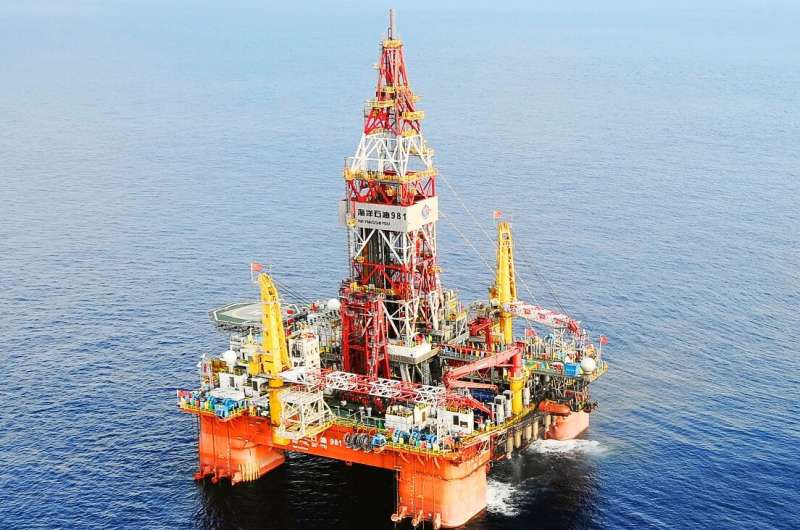This article has been reviewed according to Science X's editorial process and policies. Editors have highlighted the following attributes while ensuring the content's credibility:
fact-checked
proofread
Developments in deep-sea oil and gas resources: Hybrid mooring system for dual-platform operations

With the sustainable development of marine resources, dual-platform joint operations have garnered increasing attention. These operations require minimal relative movement between the two sub-platforms. To meet this requirement, Dr. Shen Zhongxiang proposed a new hybrid mooring system. The work has been published in China Ocean Engineering.
This new system ensures the safety of the platforms during operation by reducing the number of anchor chains and the relative motion between the two sub-platforms. Compared to traditional mooring systems, it offers better stability, allowing the platform to recover stability more rapidly when faced with extreme waves, thus ensuring the safety of personnel and facilities.
Steep Wave Risers (SWRs) are emerging as a promising option for deep-sea oil and gas resource development. They offer advantages like low top tension and long fatigue life. Professor Cheng Yong conducted research on SWRs under uniform or shear flow loads, focusing on Vortex-Induced Vibration (VIV).
He found that due to the flexible nature of SWRs, low-frequency and multi-modal vibrations become major components of SWR's nonlinear large deformation movement. This research can prolong the service life of SWR and reduce the cost of deep-sea oil and gas extraction.
To facilitate the efficient development and transportation of marine oil and gas resources, the utilization of floating liquefied natural gas (FLNG) platforms and liquefied natural gas (LNG) transport ships has become widespread.
Parallel operations are normally employed to transport LNG between these platforms and ships are employed in to minimize the traveled distance. However, it is important to note that such parallel operations may induce the so-called "gap resonance" phenomenon occurring inside the narrow gap between the FLNG platform and the LNG transport ship, thereby increasing wave loads and jeopardizing safety.
Professor Gao Junliang further studied the effects of ship motions on the features of gap resonance after considering the influences of the fluid factors such as incident wave type, wave height, wave period, wave reflection and transmission. By shedding light on the mechanisms and factors that impact this resonance, his research plays a vital role in enhancing our understanding of this phenomenon.
The research conducted by these scholars tackles crucial technical challenges in the extraction and transportation of deep-sea oil and gas, offering robust support for the safe and efficient exploitation of offshore resources.
More information: Zhong-xiang Shen et al, Study on the Characteristics of A New Hybrid Mooring System for Dual-Platform Joint Operations, China Ocean Engineering (2023). DOI: 10.1007/s13344-023-0042-2



















